Chasing New Horizons
 Picador publishes the non-fiction book Chasing New Horizons: Inside The Epic First Mission To Pluto by scientists Alan Stern and David Grinspoon, retelling the story of Dr. Stern’s lengthy involvement in a movement to send a space probe to distant Pluto, and his eventual success as the principal investigator of the 21st century New Horizons mission, the first spacecraft to go there.
Picador publishes the non-fiction book Chasing New Horizons: Inside The Epic First Mission To Pluto by scientists Alan Stern and David Grinspoon, retelling the story of Dr. Stern’s lengthy involvement in a movement to send a space probe to distant Pluto, and his eventual success as the principal investigator of the 21st century New Horizons mission, the first spacecraft to go there.
New Horizons arrives at Pluto
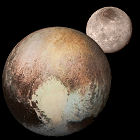 Nine years after its launch from Earth, NASA’s New Horizons space probe passes within 8,000 miles of the surface of Pluto, and within 18,000 miles of Pluto’s largest moon, Charon. Detailed images and observations are obtained of both of these bodies, with less detailed data gathered on Pluto’s four smaller, outermost moons. Cruising through the Pluto system at 30,000 miles per hour, New Horizons must break contact with Earth for nearly a full day to aim its cameras and other instruments at their targets. It’s not until some 12 hours after the point of closest flyby that New Horizons re-establishes contact with Earth, reporting that it has successfully completed the encounter with no problems.
Nine years after its launch from Earth, NASA’s New Horizons space probe passes within 8,000 miles of the surface of Pluto, and within 18,000 miles of Pluto’s largest moon, Charon. Detailed images and observations are obtained of both of these bodies, with less detailed data gathered on Pluto’s four smaller, outermost moons. Cruising through the Pluto system at 30,000 miles per hour, New Horizons must break contact with Earth for nearly a full day to aim its cameras and other instruments at their targets. It’s not until some 12 hours after the point of closest flyby that New Horizons re-establishes contact with Earth, reporting that it has successfully completed the encounter with no problems.
New Horizons’ last-minute scare
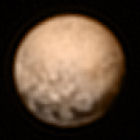 NASA’s New Horizons abruptly loses contact with Earth-based ground controllers and then signals that it has gone into safe mode, ten days before its closest flyby of Pluto. In this mode, the spacecraft gathers no scientific data, and awaits intervention from Earth, but its distance from Earth – four billion miles away – means that signals transmitted to or from New Horizons take four and a half hours to reach their destination (and any reply takes just as long). A timing error is located in New Horizons’ automatic event sequencer, a vital part of its mission since it will need to operate independently to conduct hundreds of observations of Pluto and its satellites with no contact from Earth until later, and the probe is rebooted within 48 hours. Though the probe’s automatic switch to failsafe mode has cost the mission some scientific observations, most of the high-value data will not be collected until within 24 hours of closest approach on July 14th.
NASA’s New Horizons abruptly loses contact with Earth-based ground controllers and then signals that it has gone into safe mode, ten days before its closest flyby of Pluto. In this mode, the spacecraft gathers no scientific data, and awaits intervention from Earth, but its distance from Earth – four billion miles away – means that signals transmitted to or from New Horizons take four and a half hours to reach their destination (and any reply takes just as long). A timing error is located in New Horizons’ automatic event sequencer, a vital part of its mission since it will need to operate independently to conduct hundreds of observations of Pluto and its satellites with no contact from Earth until later, and the probe is rebooted within 48 hours. Though the probe’s automatic switch to failsafe mode has cost the mission some scientific observations, most of the high-value data will not be collected until within 24 hours of closest approach on July 14th.
Pluto’s fourth and fifth moons named
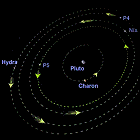 Two tiny, recently-discovered satellites of dwarf planet Pluto have new named ratified by the International Astronomical Union; P4 is renamed Kerberos and P5 is renamed Styx. The names – related to the “underworld” theme that has governed the naming of Pluto and its moons to date – overlooks a popular online vote that suggested one of the moons should be named Vulcan, after Mr. Spock’s home planet in Star Trek. Kerberos, discoverd in 2011, is believed to be approximately 20 miles in diameter and orbits Pluto at a distance of roughly 37,000 miles. Styx, first sighted in 2012, is even smaller, with an estimated diameter of 15 miles, orbiting only 1,200 miles from Pluto, making it the innermost satellite (a distinction previously held by Pluto’s near-twin, Charon). NASA’s New Horizons spacecraft will have the opportunity to see the new moons up close when it does a flyby of Pluto in 2015.
Two tiny, recently-discovered satellites of dwarf planet Pluto have new named ratified by the International Astronomical Union; P4 is renamed Kerberos and P5 is renamed Styx. The names – related to the “underworld” theme that has governed the naming of Pluto and its moons to date – overlooks a popular online vote that suggested one of the moons should be named Vulcan, after Mr. Spock’s home planet in Star Trek. Kerberos, discoverd in 2011, is believed to be approximately 20 miles in diameter and orbits Pluto at a distance of roughly 37,000 miles. Styx, first sighted in 2012, is even smaller, with an estimated diameter of 15 miles, orbiting only 1,200 miles from Pluto, making it the innermost satellite (a distinction previously held by Pluto’s near-twin, Charon). NASA’s New Horizons spacecraft will have the opportunity to see the new moons up close when it does a flyby of Pluto in 2015.
New Horizons launched
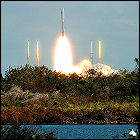 NASA launches the unmanned New Horizons probe on a course for the minor planet Pluto, the first spacecraft built to explore that destination. A trajectory with multiple planetary flybys and gravitational assists is designed to sling New Horizons toward Pluto within a decade (compared to Voyager 2’s 12-year trek to Neptune).
NASA launches the unmanned New Horizons probe on a course for the minor planet Pluto, the first spacecraft built to explore that destination. A trajectory with multiple planetary flybys and gravitational assists is designed to sling New Horizons toward Pluto within a decade (compared to Voyager 2’s 12-year trek to Neptune).
New Horizons will enter Pluto’s surprisingly complex system in 2015.
Mittens required on Pluto
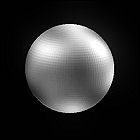 Scientists are already aware that Pluto is really cold, but recent observations suggest that it’s even colder than they had imagined. New radio telescope measurements of Pluto’s surface indicate that it’s a brisk -382 degrees Fahrenheit (scientists had earlier estimated a positively summery -364). Part of the reason for the slight chill in the air – if indeed there was any there – is that Pluto is on the outbound train. The tiny planet’s highly inclined orbit isn’t centered around the sun, while the solar system’s other worlds are more or less centered; part of Pluto’s orbit carries it further away from the sun and “under” the plane shared by the other planets. Curiously enough, however, the surface of Charon – Pluto’s nearly-identical-twin moon – is determined to be warmer than Pluto itself. The readings are taken by the Submillimeter Array in Hawaii by astronomers at the Harvard-Smithsonian Center for Astrophysics.
Scientists are already aware that Pluto is really cold, but recent observations suggest that it’s even colder than they had imagined. New radio telescope measurements of Pluto’s surface indicate that it’s a brisk -382 degrees Fahrenheit (scientists had earlier estimated a positively summery -364). Part of the reason for the slight chill in the air – if indeed there was any there – is that Pluto is on the outbound train. The tiny planet’s highly inclined orbit isn’t centered around the sun, while the solar system’s other worlds are more or less centered; part of Pluto’s orbit carries it further away from the sun and “under” the plane shared by the other planets. Curiously enough, however, the surface of Charon – Pluto’s nearly-identical-twin moon – is determined to be warmer than Pluto itself. The readings are taken by the Submillimeter Array in Hawaii by astronomers at the Harvard-Smithsonian Center for Astrophysics.
New Horizons to Pluto
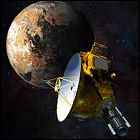 NASA announces that the New Horizons mission, proposed by a group of scientists and engineers from the cancelled Pluto-Kuiper Express mission, will go ahead to preparation, construction and launch sometime in 2006. Part of NASA’s new New Frontiers mission class, New Horizons promises significant scientific return from a never-before-explored region of the solar system while adhering to the “faster, better, cheaper” philosophy NASA has rallied around since the 1990s. Though this is the official green light for New Horizons to proceed, budget cutbacks at the Congressional level will threaten the mission for several years to come.
NASA announces that the New Horizons mission, proposed by a group of scientists and engineers from the cancelled Pluto-Kuiper Express mission, will go ahead to preparation, construction and launch sometime in 2006. Part of NASA’s new New Frontiers mission class, New Horizons promises significant scientific return from a never-before-explored region of the solar system while adhering to the “faster, better, cheaper” philosophy NASA has rallied around since the 1990s. Though this is the official green light for New Horizons to proceed, budget cutbacks at the Congressional level will threaten the mission for several years to come.
On to New Horizons
 In response to a NASA request for mission proposals a month earlier, Southwest Research Institute scientist Dr. Alan Stern and a group of other scientists and engineers who had been working on the now-cancelled Pluto-Kuiper Express mission submit a nearly-identical proposal to NASA for a Pluto/Kuiper Belt mission called New Horizons. Very much like Pluto-Kuiper Express, New Horizons calls for a single small spacecraft to launch early in the 21st century, and, after a gravity assist from a Jupiter flyby, a Pluto encounter 10-11 years after launch. Some of the program costs are streamlined in the new proposal to make this iteration of the long-delayed Pluto mission more appealing to NASA, although New Horizons would carry more scientific payload than any previously envisioned Pluto expedition. Another proposal, Pluto and Outer Solar System Explorer (POSSE), is also submitted to NASA.
In response to a NASA request for mission proposals a month earlier, Southwest Research Institute scientist Dr. Alan Stern and a group of other scientists and engineers who had been working on the now-cancelled Pluto-Kuiper Express mission submit a nearly-identical proposal to NASA for a Pluto/Kuiper Belt mission called New Horizons. Very much like Pluto-Kuiper Express, New Horizons calls for a single small spacecraft to launch early in the 21st century, and, after a gravity assist from a Jupiter flyby, a Pluto encounter 10-11 years after launch. Some of the program costs are streamlined in the new proposal to make this iteration of the long-delayed Pluto mission more appealing to NASA, although New Horizons would carry more scientific payload than any previously envisioned Pluto expedition. Another proposal, Pluto and Outer Solar System Explorer (POSSE), is also submitted to NASA.
Pluto-Kuiper Express mission scuttled
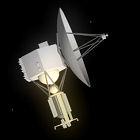 After four years of ballooning costs and launch weight, NASA brings work on the proposed Pluto-Kuiper Express mission to a stop, citing cost overruns and angering planetary scientists. The scientific community protests that, if a mission is not launched to reach Pluto by the year 2020, the tiny planet’s atmosphere will undergo a kind of reverse sublimation process, transitioning from a gas to a solid that rains down to Pluto’s surface. But with mission plans calling for a half-billion-dollar mission (originally budgeted for only $350 million), NASA pulls the plug, announcing that it will solicit new mission designs and plans from scientists around the world, even as advocates for the Pluto-Kuiper Express mission rally around the cancelled proposal.
After four years of ballooning costs and launch weight, NASA brings work on the proposed Pluto-Kuiper Express mission to a stop, citing cost overruns and angering planetary scientists. The scientific community protests that, if a mission is not launched to reach Pluto by the year 2020, the tiny planet’s atmosphere will undergo a kind of reverse sublimation process, transitioning from a gas to a solid that rains down to Pluto’s surface. But with mission plans calling for a half-billion-dollar mission (originally budgeted for only $350 million), NASA pulls the plug, announcing that it will solicit new mission designs and plans from scientists around the world, even as advocates for the Pluto-Kuiper Express mission rally around the cancelled proposal.
All aboard the Pluto-Kuiper Express
 With NASA/JPL’s Pluto Fast Flyby mission cancelled, a new mission is proposed by several scientists and engineers, including veterans of the Voyager program, to send a small spacecraft to Pluto. Originally named Pluto Express, and later Pluto-Kuiper Express, the unmanned spacecraft would be armed with a handful of scientific instruments (as opposed to Pluto Fast Flyby’s camera-only proposal). Plans call for launch via a Delta Heavy rocket or from the cargo bay of a Space Shuttle in 2004, a Jupiter gravity assist flyby in 2006, and a Pluto flyby in 2012. Though there are early talks with the Russian space program about including landers or penetrators, that element of the mission is dropped soon afterward.
With NASA/JPL’s Pluto Fast Flyby mission cancelled, a new mission is proposed by several scientists and engineers, including veterans of the Voyager program, to send a small spacecraft to Pluto. Originally named Pluto Express, and later Pluto-Kuiper Express, the unmanned spacecraft would be armed with a handful of scientific instruments (as opposed to Pluto Fast Flyby’s camera-only proposal). Plans call for launch via a Delta Heavy rocket or from the cargo bay of a Space Shuttle in 2004, a Jupiter gravity assist flyby in 2006, and a Pluto flyby in 2012. Though there are early talks with the Russian space program about including landers or penetrators, that element of the mission is dropped soon afterward.
Hubble peeks at Pluto
 After decades of the tiny object being seen only as a point of light in even the best telescopic images, the Hubble Space Telescope makes the first survey of the surface of Pluto. Even without the distortion introduced by Earth’s atmosphere, Hubble’s best shots of Pluto are vague due to the distance from Earth to Pluto, but they mark the first time that even blurry surface detail has been seen. The new images help NASA gain support for a Pluto flyby mission in the 21st century, which will eventually be named New Horizons.
After decades of the tiny object being seen only as a point of light in even the best telescopic images, the Hubble Space Telescope makes the first survey of the surface of Pluto. Even without the distortion introduced by Earth’s atmosphere, Hubble’s best shots of Pluto are vague due to the distance from Earth to Pluto, but they mark the first time that even blurry surface detail has been seen. The new images help NASA gain support for a Pluto flyby mission in the 21st century, which will eventually be named New Horizons.
Pluto Fast Flyby
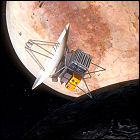 NASA and JPL announce a plan is in the works to launch small twin spacecraft toward the planet Pluto. The Pluto Fast Flyby mission would launch two vehicles in 1997 or 1998, much smaller than the Voyager spacecraft that have explored the larger outer planets, with the two vehicles possibly arriving at Pluto as early as 2005 or 2007. Pluto Fast Flyby has the support of NASA’s new administrator and the White House, both of whom are insisting that NASA embrace a “faster, better, cheaper” space exploration philosophy. To save weight and energy, the initial mission proposal calls for no instruments other than cameras. This meets with protests from scientists (and proponents of the earlier Pluto 350 mission proposal). In the rapidly changing political climate at NASA, the Pluto Fast Flyby proposal lasts less than a year.
NASA and JPL announce a plan is in the works to launch small twin spacecraft toward the planet Pluto. The Pluto Fast Flyby mission would launch two vehicles in 1997 or 1998, much smaller than the Voyager spacecraft that have explored the larger outer planets, with the two vehicles possibly arriving at Pluto as early as 2005 or 2007. Pluto Fast Flyby has the support of NASA’s new administrator and the White House, both of whom are insisting that NASA embrace a “faster, better, cheaper” space exploration philosophy. To save weight and energy, the initial mission proposal calls for no instruments other than cameras. This meets with protests from scientists (and proponents of the earlier Pluto 350 mission proposal). In the rapidly changing political climate at NASA, the Pluto Fast Flyby proposal lasts less than a year.
Pluto 350
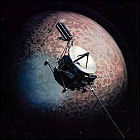 Encouraged by the public interest in Voyager 2’s recent visit to Neptune, scientist Robert Farquhar and graduate student Alan Stern pitch a concept for a compact mission, using hardware derived from the Voyager program, to the planet Pluto. Named Pluto 350, for the 350-kilogram upper weight limit decided on as a feasible and affordable launch weight, their proposed mission would launch in November 2001, have a close encounter with asteroid 1442 Corvina in 2002, then a return to Earth to catch a gravity assist in 2005, with a further gravity assist at Jupiter boosting Pluto 350 to its final target in 2015. In addition to pitching this plan to NASA, Farquhar and Stern appeal to the public by publishing a detailed six-page mission plan in the pages of the Planetary Society’s newsletter. However, a tendency toward larger spacecraft – such as the Mariner Mark II architecture envisioned for the upcoming Cassini and CRAF missions – means that Pluto 350 is not given serious consideration by NASA.
Encouraged by the public interest in Voyager 2’s recent visit to Neptune, scientist Robert Farquhar and graduate student Alan Stern pitch a concept for a compact mission, using hardware derived from the Voyager program, to the planet Pluto. Named Pluto 350, for the 350-kilogram upper weight limit decided on as a feasible and affordable launch weight, their proposed mission would launch in November 2001, have a close encounter with asteroid 1442 Corvina in 2002, then a return to Earth to catch a gravity assist in 2005, with a further gravity assist at Jupiter boosting Pluto 350 to its final target in 2015. In addition to pitching this plan to NASA, Farquhar and Stern appeal to the public by publishing a detailed six-page mission plan in the pages of the Planetary Society’s newsletter. However, a tendency toward larger spacecraft – such as the Mariner Mark II architecture envisioned for the upcoming Cassini and CRAF missions – means that Pluto 350 is not given serious consideration by NASA.
Pioneer 10 past Pluto
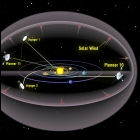 NASA’s Pioneer 10 unmanned spacecraft becomes the first human-made spacecraft to pass beyond the orbit of Pluto, the outermost known planet in the solar system. (Pioneer 10 merely crosses the planet’s orbital path; Pluto itself is in a different part of its orbit, nowhere near Pioneer at the time.) Launched in 1972, Pioneer 10 was the first spacecraft to cross the asteroid belt and observe the giant planet Jupiter at close range, blazing a trial for other outer solar system robotic exploration missions.
NASA’s Pioneer 10 unmanned spacecraft becomes the first human-made spacecraft to pass beyond the orbit of Pluto, the outermost known planet in the solar system. (Pioneer 10 merely crosses the planet’s orbital path; Pluto itself is in a different part of its orbit, nowhere near Pioneer at the time.) Launched in 1972, Pioneer 10 was the first spacecraft to cross the asteroid belt and observe the giant planet Jupiter at close range, blazing a trial for other outer solar system robotic exploration missions.
Charon
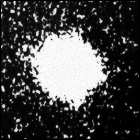 Astronomer James Christy, conducting observations of Pluto at the United States Naval Observatory, discovers a bulging shape present in some photos he’s taken of Pluto, but absent in others. Though the find meets with some skepticism, he has discovered the largest moon of Pluto, Charon, which has a mass of over 50% that of its parent body. Orbiting at only 11,000 miles from Pluto’s surface, Charon has a radius of 750 miles. Within 20 years, closer telescopic examination (including observations using the Hubble Space Telescope) confirm that Charon is separate from Pluto. Since the two bodies are relatively similar in mass, one doesn’t actually orbit the other; rather, they both orbit a center of mass – a barycenter – that lies close to, but not within, Pluto. Further observations in the 21st century lead to the unexpected discovery of four further satellites of Pluto.
Astronomer James Christy, conducting observations of Pluto at the United States Naval Observatory, discovers a bulging shape present in some photos he’s taken of Pluto, but absent in others. Though the find meets with some skepticism, he has discovered the largest moon of Pluto, Charon, which has a mass of over 50% that of its parent body. Orbiting at only 11,000 miles from Pluto’s surface, Charon has a radius of 750 miles. Within 20 years, closer telescopic examination (including observations using the Hubble Space Telescope) confirm that Charon is separate from Pluto. Since the two bodies are relatively similar in mass, one doesn’t actually orbit the other; rather, they both orbit a center of mass – a barycenter – that lies close to, but not within, Pluto. Further observations in the 21st century lead to the unexpected discovery of four further satellites of Pluto.
The Grand Tour
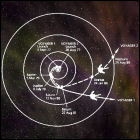 The Grand Tour Outer Planets mission is proposed to NASA by the Jet Propulsion Laboratory. Using a combination of the gravitational assist trajectories computed by JPL’s Michael Minovitch in 1961, Caltech/JPL grad student Gary Flandro has identified a favorable alignment of the outer planets which would allow for a single spacecraft to reach Jupiter, Saturn, Uranus, Neptune and Pluto within two decades. Vehicles taking advantage of this planetary alignment must lift off at very precise times during 1977 and 1978, and the alignment will not occur again for nearly 200 years. An ambitious plan is laid out for multiple flyby vehicles with atmospheric probes for every gas planet and landers for specific moons of interest, launched by Saturn V rockets. Budget realities scale this plan back: flybys will be carried out by two cheaper Mariner vehicles (later renamed Voyager), while the atmospheric and satellite probes – eventually to be renamed Galileo and Cassini – wait even longer to reach their destinations, and the Pluto flyby is scrapped until the 21st century New Horizons probe lifts off. JPL also recommends an inner solar system tryout of the gravitational assist maneuvers required, resulting in the Mariner 10 mission to Venus and Mercury.
The Grand Tour Outer Planets mission is proposed to NASA by the Jet Propulsion Laboratory. Using a combination of the gravitational assist trajectories computed by JPL’s Michael Minovitch in 1961, Caltech/JPL grad student Gary Flandro has identified a favorable alignment of the outer planets which would allow for a single spacecraft to reach Jupiter, Saturn, Uranus, Neptune and Pluto within two decades. Vehicles taking advantage of this planetary alignment must lift off at very precise times during 1977 and 1978, and the alignment will not occur again for nearly 200 years. An ambitious plan is laid out for multiple flyby vehicles with atmospheric probes for every gas planet and landers for specific moons of interest, launched by Saturn V rockets. Budget realities scale this plan back: flybys will be carried out by two cheaper Mariner vehicles (later renamed Voyager), while the atmospheric and satellite probes – eventually to be renamed Galileo and Cassini – wait even longer to reach their destinations, and the Pluto flyby is scrapped until the 21st century New Horizons probe lifts off. JPL also recommends an inner solar system tryout of the gravitational assist maneuvers required, resulting in the Mariner 10 mission to Venus and Mercury.
Gravitational assist
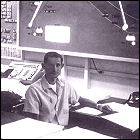 Recent Jet Propulsion Laboratory hire Michael Minovitch submits the first of a series of papers and technical memorandums on the possibility of using carefully-calculated gravitational assist maneuvers to speed transit time between celestial bodies while requiring minimal engine/fuel use. Where most previous scientific thought concentrated on using engine burns (and a lot of fuel) to cancel the effects of a planet’s gravity, Minovitch demonstrated that gravity could be a big help with a carefully calculated trajectory. Though nearly every planetary mission since then has capitalized on Minovitch’s research, it was initially rejected by JPL. Minovitch’s calculations are later revisited by Caltech grad student Gary Flandro, who flags down a particular combination of Minovitch’s pre-computed trajectories for a “grand tour” of the outer solar system, a mission which will eventually be known – in a somewhat scaled-down, less grand form – as Voyager.
Recent Jet Propulsion Laboratory hire Michael Minovitch submits the first of a series of papers and technical memorandums on the possibility of using carefully-calculated gravitational assist maneuvers to speed transit time between celestial bodies while requiring minimal engine/fuel use. Where most previous scientific thought concentrated on using engine burns (and a lot of fuel) to cancel the effects of a planet’s gravity, Minovitch demonstrated that gravity could be a big help with a carefully calculated trajectory. Though nearly every planetary mission since then has capitalized on Minovitch’s research, it was initially rejected by JPL. Minovitch’s calculations are later revisited by Caltech grad student Gary Flandro, who flags down a particular combination of Minovitch’s pre-computed trajectories for a “grand tour” of the outer solar system, a mission which will eventually be known – in a somewhat scaled-down, less grand form – as Voyager.